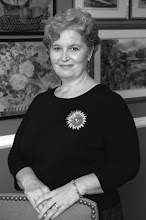
I essentially grew up with the Dystonia Medical Research Foundation (DMRF) and it is my great pleasure to now serve as President of the Board of Directors. My predecessor Claire Centrella led the DMRF through many important and exciting years, and her leadership was critical to our success. I join the dystonia community in thanking her for her committed and steadfast service.
A little about me: my parents, Dennis and Barbara Kessler, have been involved with the DMRF since the very beginning. Their commitment was fueled by the desire to make a significant difference in the quality of my life, for I had been diagnosed with early onset dystonia at the age of 12. This diagnosis came after years of unexplained symptoms, countless doctor visits, and many a sleepless night.
As a child, I was struck by their drive to make things better, not just for me, but for all families devastated by this disorder. They taught me to work hard for a cause bigger than myself and that is exactly what I plan to do. They didn't give up and they instilled in me that same unyielding desire to find the answers.
I support the work of the DMRF because it is making a difference. As an adult, I learned that I was positive for the DYT1 gene mutation, a gene found through funding by the DMRF. My two sons were conceived through a form of in vitro fertilization that ensured they would not inherit the mutated gene. They are dystonia free and, at 6 and 2 years old, are busy and energetic. Their childhood will be very different from mine, and that means the world to me.
In 2007, when it became too painful to walk to the park with my son, I decided to undergo deep brain stimulation surgery, the results have been life changing. My wife and sons now have a husband and father who, despite having dystonia, is physically able to be active and fully engaged. None of this would have been possible without the DMRF.
I know dystonia. I know the DMRF. Over the years, I have come to know many of you and I am optimistic about our future and our plans to wipe out dystonia. I look forward to working hard on your behalf and with your partnership. Thank you for your support.
Sincerely,
Art Kessler
President






